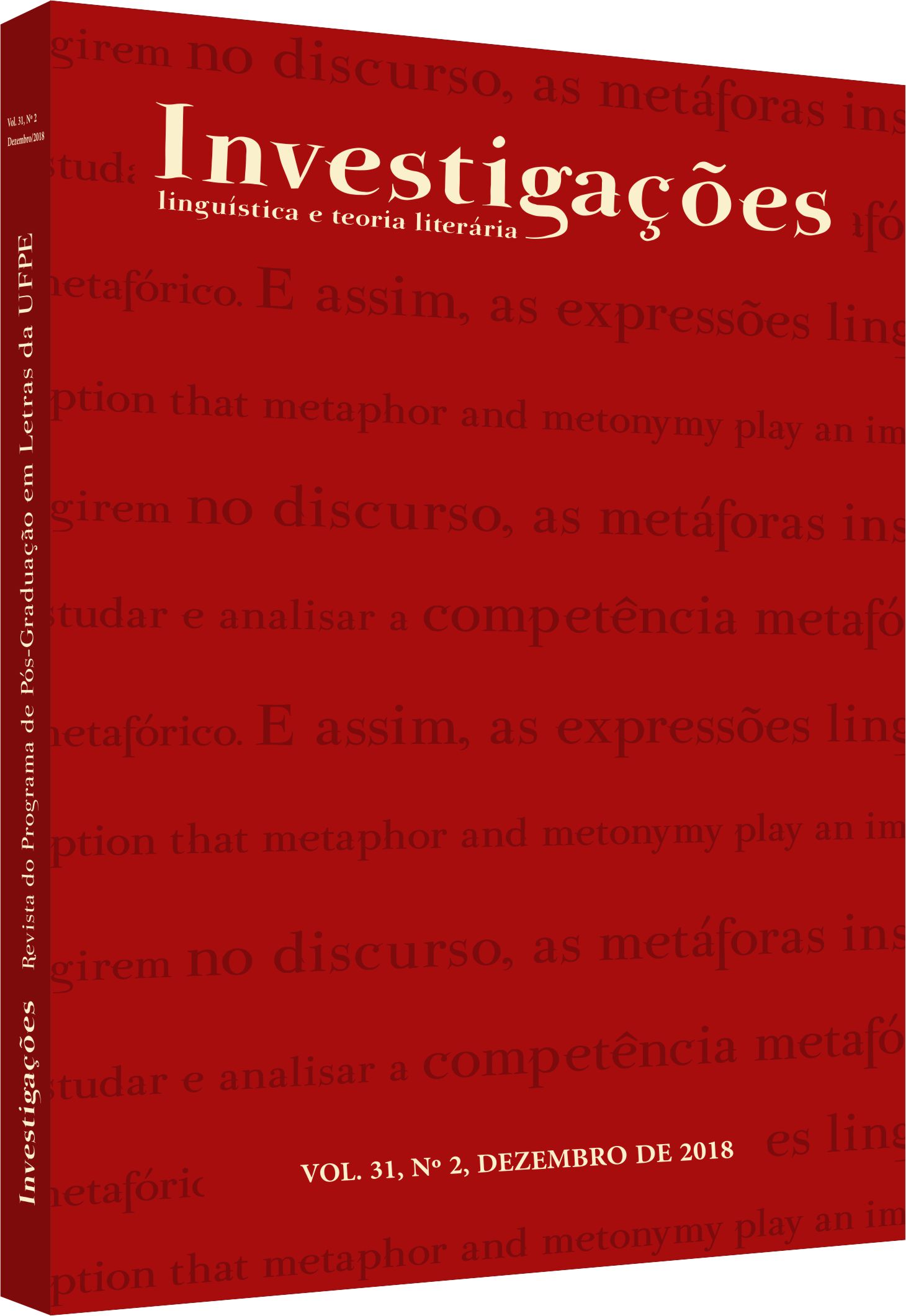Diversidade na aula de Língua Portuguesa: um olhar discursivo ao que diz a BNCC
DOI:
https://doi.org/10.51359/2175-294x.2018.238078Abstract
Resumo: O presente trabalho analisa como a Base Nacional Comum Curricular discursiviza questões relacionadas à diversidade e ao trato com o diferente. O desenvolvimento do trabalho tomou como referência e corpus de análise uma sequência discursiva recortada das diretrizes que o documento apresenta para o componente curricular Língua Portuguesa. O olhar lançado ao recorte tomou como base a Análise de Discurso de vertente francesa e teve como objetivo principal refletir sobre os efeitos de sentido que o posicionamento do documento faz circular.
Palavras-chave: BNCC. Diversidade. Discurso de Ódio.
References
BRASIL. Ministério da Educação. Secretaria da Educação Básica. Base Nacional Comum Curricular. Brasília, DF, 2016. (Disponível em: < http://basenacionalcomum.mec.gov.br>. Acesso em: 30 mai. 2018. (Versão de 472 páginas)
CORACINI, Maria José. Subjetividade e Identidade do professor de Português. Trabalhos em Linguística Aplicada, Campinas, n. 36, p. 147-158, jul./dez., 2000.
ECKERT-HOFF, Beatriz Maria. O Discurso do Sujeito - Professor em Formação: (Des)Construindo Subjetividades. In. Cad. Cedes, Campinas, v. 35, n. 95, p. 91-106, jan. - abr., 2015
LUNA, Nevita Maria Pessoa de Aquino Franca; SANTOS, Gustavo Ferreira. Liberdade de expressão e discurso do ódio no Brasil. Revista Direito e Liberdade, Natal, v. 16, n. 3, p. 227-255, set./dez. 2014. Quadrimestral.
ROTHENBURG, Walter C.; STROPPA, Tatiana. Liberdade de expressão e discurso do ódio: o conflito discursivo nas redes sociais. IN: Anais do 3o Congresso Internacional de Direito e Contemporaneidade: mídias e direitos da sociedade em rede. Santa Maria: UFSM, 2015. Disponível em: http://www.ufsm.br/congressodireito/anais. Acesso em: 02 jun. 2018.
ORLANDI, Eni P. Linguistas: questões e controversias. Uberaba: Finbe, 1984.
_______. Análise de discurso: princípios e procedimentos. Campinas, SP: Pontes, 2001.
_______. Análise de discurso. IN: ORLANDI, Eni P. e LAGAZZI-RODRIGUES, Suzy. (orgs.) Discurso e textualidade. Campinas: Pontes Editora, 2006.
PÊCHEUX, Michel. Análise automática do discurso (AAD-69). In: GADET, Francoise; HAK, Tony. Por uma análise automática do discurso: uma introdução à obra de M. Pêcheux. Campinas: Ed. da Unicamp, 1997.
_______. Papel da memória. In: ACHARD, Pierre. et al. (Org.). Papel da memória. 3. ed. Trad. e introdução de José Horta Nunes. Campinas, SP: Pontes Editores, 2010, p. 49-57.
_______. Semântica e discurso. Uma crítica à afirmação do óbvio. 5a ed. Tradução de Eni P. Orlandi et al. Campinas, Unicamp, 2014.
Downloads
Published
How to Cite
Issue
Section
License
Copyright (c) 2018 Mary Neiva Surdi da Luz, Jancileidi Hübner, Maria Cecília Halmenschlager Konzen

This work is licensed under a Creative Commons Attribution 4.0 International License.
Authors who publish with Revista Investigações agree to the following terms:
Authors retain copyright and grant the journal right of first publication with the work simultaneously licensed under the Creative Commons Attribution 4.0 International (CC BY 4.0) license that allows others to share the work with an acknowledgement of the work's authorship and initial publication in this journal.
Authors are able to enter into separate, additional contractual arrangements for the non-exclusive distribution of the journal's published version of the work (e.g., post it to an institutional repository or publish it in a book), with an acknowledgement of its initial publication in this journal.
You are free to:
Share — copy and redistribute the material in any medium or format for any purpose, even commercially.
Adapt — remix, transform, and build upon the material for any purpose, even commercially.
The licensor cannot revoke these freedoms as long as you follow the license terms.
Under the following terms:
Attribution — You must give appropriate credit , provide a link to the license, and indicate if changes were made . You may do so in any reasonable manner, but not in any way that suggests the licensor endorses you or your use.
No additional restrictions — You may not apply legal terms or technological measures that legally restrict others from doing anything the license permits.

